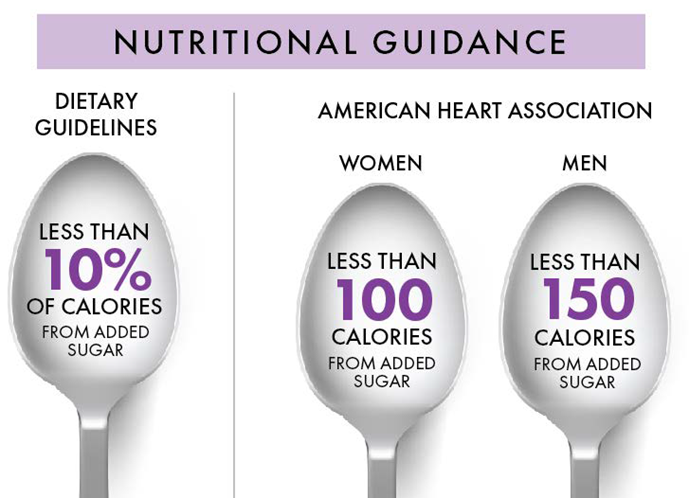Easy Diabetic Diet for Beginners: 4 Tips &Tricks
Most forms of diabetes are manageable with proper medical care and maintainable lifestyle changes. If you have been newly diagnosed with diabetes, it may be hard to know where to start. Our dietitians have put together four simple tips and tricks to help you begin a diabetic diet and maintain good health without any drastic changes, pills, and gimmicks.
First, let’s start with an overview of what diabetes is to help you understand why these tips and tricks are important to implement.
There are two main types of diabetes, Type 1 and Type 2. Type 1 diabetes is an autoimmune disease in which the immune system attacks and destroys the cells that produce insulin. Type 2 diabetes is often preventable and occurs when the body still makes insulin, but the body can’t use it properly which leads to high blood sugar levels. Type 2 diabetes is the most common form of diabetes (90-95% of all diabetes cases) and mainly affects adults.
Risk Factors for Diabetes:
- Family History
- Race or Ethnicity
- Body Size
- Lifestyle Factors, such as a more sedentary lifestyle or unhealthy diet
Learning of a diabetes or prediabetes diagnosis often catapults people into wanting to make changes to improve their health. It often is hard to know where to start, misunderstand recommendations, not know how to prepare meals, or how to fit it all into your life. Don’t worry, we are here to help with it all!
A diabetic diet doesn’t require an entire overhaul of your diet and should allow you to still live in the real world including going out to restaurants, attending birthday parties, and enjoying your favorite foods. We believe at Seattle Sutton’s Healthy Eating that everyone should be following a diet that abides by the recommendations for diabetes and heart health as these recommendations are healthy for everyone to maintain a healthy weight, decrease disease risks, control blood pressure, cholesterol, and blood sugar levels, and feel your best.
The basics of a diabetic diet include eating the right proportions of macronutrients (carbs, proteins, and fats), properly spacing meals/snacks throughout the day, limiting sugary foods and drinks, and focusing on nutrient-rich foods in appropriate portions. The goals of a diabetic diet are to:
- Balance your blood sugar to avoid large spikes or dips,
- Properly fuel your body,
- Decrease health risk that are associated with poorly controlled diabetes,
- and Help you reach and maintain a healthy weight.
Each tip from our dietitians is focused on overall health. We believe if you understand the basics, as a beginner you can make informed choices to effectively manage your diabetes.
4 Beginner Tips and Tricks
Limit Added Sugar
Don’t be confused by sugar! There are two types of sugar in the diet, added sugar and naturally occurring sugar. Foods that have too many added sugars offer no nutritional benefits, provide empty calories that can lead to weight gain, and are the main cause of blood sugar spikes. Examples include candy, desserts, sugar-sweetened beverages (i.e., soda, sweet tea), and syrup. These foods should be limited with diabetes.
Naturally occurring sugars are not bad and our bodies use them as a main source of energy. There is no recommendation for natural sugars consumed per day. The Dietary Guidelines for Americans recommend 5-9 servings of fruits and vegetables a day, which would contribute a good amount of natural sugar and has been proven to contribute to good health. Naturally occurring sugar is found in fruit and dairy products and offers vitamins, minerals, antioxidants, and fiber.
The way our bodies metabolize naturally occurring sugar is different than how it metabolizes added sugar. Our bodies break down added sugar quickly, causing a quick spike in insulin and blood sugar. We often feel less full from foods with added sugar too, making it more likely we will overeat these foods.
In contrast, the fiber and nutrients in foods with naturally occurring sugar, such as fiber and protein, are digested much slower, leading to feeling fuller with fewer calories and slows down the rise in blood sugar.
The Dietary Guidelines for Americans recommend that we eat less than 10% of our calories from added sugars each day which would be:
2000 calorie diet: 200 calories or less
1500 calorie diet: 150 calories or less
1200 calorie diet: 120 calories or less
The American Heart Association recommends women consume less than 100 calories per day (
Great first steps for cutting added sugar include ditching sugary beverages, reading labels and choosing items with lower amounts of added sugars, sweetening your foods naturally with fruits, and opting for unsweetened versions when possible.
Schedule a Daily Walk
A simple 30-minute daily walk at least 5 days a week can significantly impact your diabetes. If you are at risk for diabetes, adopting a pattern of daily activity will significantly lower your risk of developing diabetes. In addition, it will reduce your chance for heart disease and increase your success with maintaining or reaching a healthy weight.
When blood sugar levels are high, using that sugar for fuel for activity will burn up the excess in the bloodstream and naturally bring those levels down. For this reason, timing your walks to after meals is a good strategy. Exercise also helps lower insulin resistance, meaning your body is using insulin more efficiently.
Are you not too confident in decreasing the amount of sugar you consume? Walking may help you with tip #1! One study looking at how brisk walking may affect sugary snack cravings in overweight people found that a 15-minute walk of moderate intensity reduced cravings. The study found that walking was a strategy that could help you avoid sugary snacks when feeling stressed.
Anyone with a diagnosis of diabetes has almost double the risk for heart disease. Walking can lower total and LDL (“bad”) cholesterol and triglyceride levels while boosting HDL (“good”) cholesterol levels. It helps control your blood pressure, naturally lower blood sugar, and decreases your risk for certain cancer.
Three simple goals for an effective walking routine are:
1.Aim for 30-45 minutes of walking.
2.Walk at a pace of 2.5 to 4 miles per hour, which equates to walking one mile in 15-24 minutes.
3.Complete this walking routine five days a week.
Add a Side of Veggies
A common nutritional suggestion for diabetic meal planning is to make half of your plate non-starchy vegetables. Broccoli, asparagus, tomatoes, cucumbers, zucchini, green beans, leafy greens, and other veggies are chock-full of vitamins, minerals, antioxidants, and fiber making them an ideal food to increase on your plate. In addition, they are low in calories and have very little impact on blood sugar.
One thing we love is focusing on what to add to your plate, instead of taking things away. This philosophy feels more approachable and naturally helps to crowd the diet with healthier foods which are better at combating overeating and filling us up. This helps decrease foods that are not as healthy without making them feel off limits or setting people up for the guilt-stricken diet rules of the past.
When eating at a restaurant or meal planning, an easy strategy is to choose a non-starchy veggie for your side dish instead of a carb-heavy side. This doesn’t mean you can’t enjoy a baked potato, rice, or pasta but by focusing on veggies first and adding as much veggies as you want will help you to better balance your plate, decrease the total amount of carbohydrates, but also increase the nutrition and fullness factor of your meals.
The American Diabetes Association recommends trying to eat at least 3 to 5 servings of vegetables a day (and this is a minimum!) One serving is ½ cup of cooked vegetables and 1 cup of raw veggies. How are you doing with meeting this goal? Focus on making more of your sides veggies and salads and we’re confident you will see improvements in your diabetes management.
Read Labels
Now, we are not recommending that you spend hours at the grocery store decoding labels and obsessing over every item. But it is a good idea to start glancing at labels to get familiar with what items have carbohydrates, fiber, added sugars, and which do not. Many people are not accustomed to looking at the labels and have a hard time identifying which foods have carbs and which foods are carb-free. However, as a diabetic diet beginner this is a great first step.
Did you know that milk has carbs, but cottage cheese does not? Did you know that dried fruit has more carbs than fresh? Did you know that eggs are carb-free? By looking at the labels you will learn a lot.
Knowing sources of carbohydrates (and their serving sizes) are a key part of a diabetic diet. Carbohydrate-containing foods are broken down to glucose (sugar) which is then transferred into our cells by insulin to provide energy for our body. Glucose is the brains main source of fuel, but also an important fuel for all cells including our muscles and other tissues.
The goal isn’t to cut out all sources of carbohydrates in the diet but to control the amount that is eaten and choose healthier sources of carbohydrates. Simply put, the more carbohydrates you eat the higher your blood sugar will go and if you do not eat enough, you run the risk of your blood sugar going too low.
The amount of carbs you eat per meal depends on several factors such as age, weight, activity level, and medications. Most adults aim for 45-60 grams of carbs per meal and 15-30 grams per snack. The American Diabetes Association guidelines recommend 45-65% of your calories come from carbohydrates. Seattle Sutton’s Healthy Eating meal plans follow these guidelines, and our meal plans average:
1200 calorie plan: 45% of calories from carbohydrates, about 47 grams of carbs per meal
1200 calorie - vegetarian menu: 51% of calories from carbohydrates, about 53 grams of carbs per meal
2000 calorie plan: 45% of calories from carbohydrates, about 73 grams of carbs per meal
2000 calorie - vegetarian men: 49% of calories from carbohydrates, about 77 grams of carbs per meal
If you are overwhelmed with label reading and don’t know where to start our convenient meal plans may help you learn portion sizes, basics of meal planning, and take the guesswork out of what to eat.
Summary
As a result of implementing these four simple strategies into your daily life, you may find that you consume less unhealthy foods, feel better, and lose unwanted pounds. Losing excess weight, if you are overweight or obese, is one of the most effective ways to control or prevent diabetes.
According to several studies, losing 7 to 10 percent of your current weight can cut your chances of developing Type 2 diabetes by 50%!!! And if you have diabetes, losing weight can reverse diabetes, reduce your need for medication, and help keep blood sugars in the normal range.
If you decide to implement other goals on your own or with your diabetes care team, we encourage you to focus on making changes that you can envision maintaining over the long term. If unhealthy habits return due to making unsustainable changes, the risks of complications come back with those habits. It’s best to focus on changes that you are confident you can manage long-term.
Unsure where to start? With our meal plans you are always receiving nutritionally balanced meals within the guidelines of the American Diabetes Association, American Heart Association, and the Dietary Guidelines for Americans. Reach out to our Registered Dietitians and Diabetes Care Team today.









 Weight Loss
Weight Loss Health & Wellness
Health & Wellness Diabetes
Diabetes Heart Health
Heart Health Motherhood & Family
Motherhood & Family Dietary Restriction
Dietary Restriction Other Health Conditions
Other Health Conditions About SSHE
About SSHE


